The Economics and Statistics Division maintains archives of previous publications for accountability purposes, but makes no updates to keep these documents current with the latest data revisions from Statistics Canada. As a result, information in older documents may not be accurate. Please exercise caution when referring to older documents. For the latest information and historical data, please contact the individual listed to the right.
<--- Return to Archive
For additional information relating to this article, please contact:
February 08, 2019HOUSING STARTS, JANUARY 2019 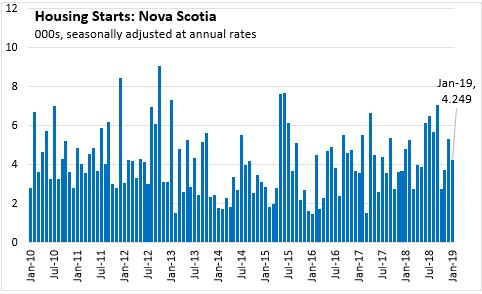
Nova Scotia's housing starts (seasonally adjusted annualized rate) declined 20.5 per cent to 4,249 in January compared to 5,344 in December. Compared to January 2018, housing starts were down 11.7 per cent.
Housing starts decreased 22.9 per cent in Halifax to 2,692 compared to 3,490 in December. Halifax starts are up 22.1 per cent compared to January 2018.
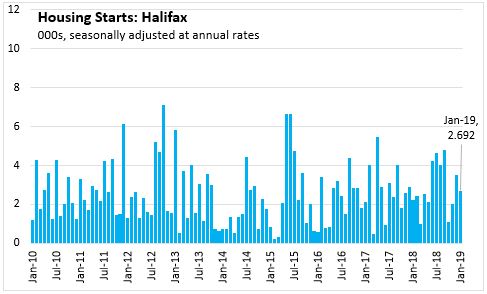
The six-month moving average of housing starts in Nova Scotia and Halifax was relatively flat through 2017. During 2018, the six-month moving average rose due to higher starts for multiples and has declined since reaching a peak in September.
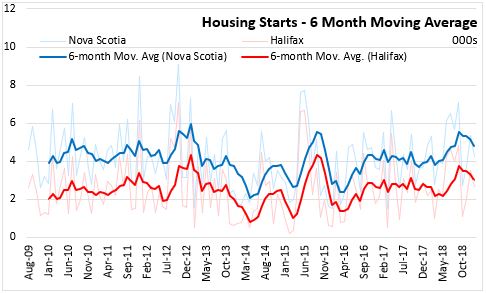
In urban areas, housing starts for multiples are generally higher than for singles with greater variability month-to-month. The six-month moving average for singles has remained relatively flat since 2017, despite a period in the first half of 2018 when it rose gradually. The six-month moving average for multiples rose during the summer months of 2018 and have since peaked.
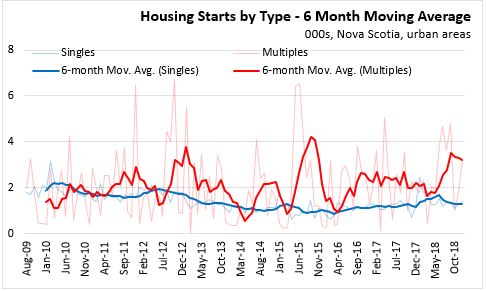
Nationally, housing starts are down 2.7 per cent in January to 207,968 compared to 213,630 in December. National housing starts are 4.3 per cent lower than in January 2018.
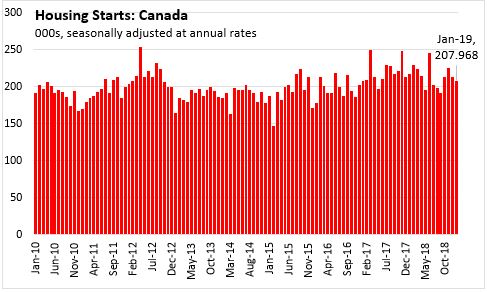
Comparing January 2019 with January 2018, housing starts were down in seven provinces, with the largest declines in Saskatchewan (-53.9 per cent) and Newfoundland and Labrador (-53.0 per cent). Prince Edward Island (+78.3 per cent) reported the largest increase in housing starts over January 2018.
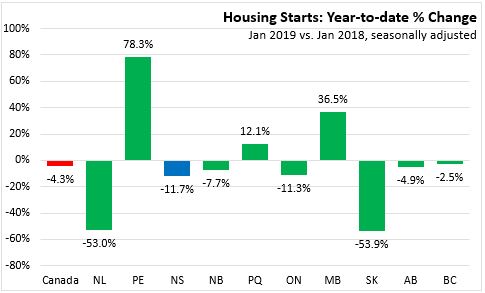
Note: Urban areas are defined as areas over 10,000 people
Statistics Canada Table 34-10-0158-01 and Table 34-10-0156-01
CHMC Housing Market Information Portal
<--- Return to Archive